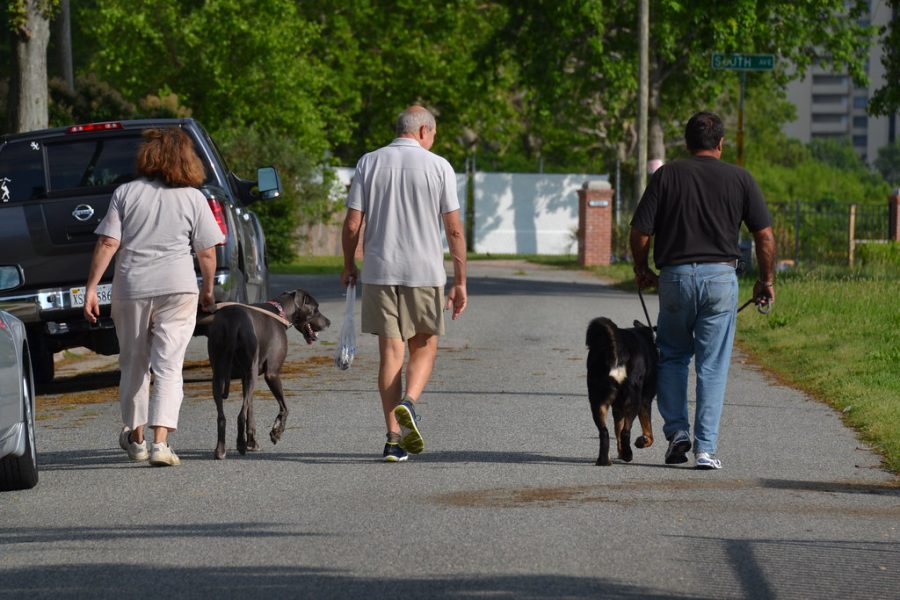Dog Paws in the Heat
September 15, 2022
Imagine taking a walk in the hot summer without your socks or shoes on. Of course, that isn’t something your average person would do on the daily; way too hot, right? That’s what it’s like for dogs. The temperature on the weather app isn’t the same as the temperature of the pavement you might walk down with your dog; it’s usually about 10 or 20 degrees Fahrenheit hotter than the air, reaching temperatures hot enough to damage skin through prolonged exposure. However, avoiding this isn’t too hard if you have good timing and/or protection for your dog’s paws.
People might assume that the pads on a dog’s paws are naturally tough because they’re animals and evolve to walk on rough surfaces, but this isn’t necessarily true. Dogs’ paws toughen up as they walk along rocks and pavement more and more, but they certainly aren’t like this initially. If you’re walking a puppy or even a dog that’s new to walking, their pads aren’t dissimilar to the skin on your feet. Even if they have become resistant to rough surfaces, that isn’t the case regarding the heat of the pavement and asphalt when you cross the street. Later in the day when the pavement has been essentially cooking in the sun, it can reach temperatures close to those used to fry things on a pan; see the fairly common description for the heat of the pavement, practically being able to cook an egg on it. Considering the sun today, the heat of the pavement is very capable of seriously harming your dog. Follow the seven second rule: if you can’t keep the back of your hand on the pavement for more than seven seconds without it feeling too hot, it’s too hot for your dog. Between different people, the amount of time exactly varies, but essentially, if you can’t keep your hand on the pavement comfortably, your dog can’t either.
The time of day plays an important role in the heat of the pavement. In the morning, before it heats up too much, the pavement will still be fairly cool because it hasn’t absorbed a lot of heat yet. Late evening, when it begins to get dark and cool down, is also a good time to walk your dog to avoid the heat; it is dangerous to go out alone at night, however. In the afternoon from around 12 pm to 5 pm, the ground reaches peak temperatures. Multiple sources have stated that even on a sunny, 77 degrees Fahrenheit day, the temperature of the asphalt out in the sun can be over 100 degrees. You can also try to stick to shaded sides of the street, but large shadows from houses and fences are typically only cast in the early or late hours of the day anyway. If possible, try to walk your dog during those times of the day.
The heat of the pavement doesn’t necessarily mean you can’t walk your dog, however; there are dog shoes! Dog shoes are self-explanatory: shoes for your dog so they don’t burn their paws on a hot day. They might look a bit funny, but if your dog really needs the exercise and there’s no better time of day than the afternoon, they’re a good solution. Dog shoes (and socks) are sold by many pet brands like PetSmart and PetCo, shoes typically going for $20 or $30, while the socks sell for around $10. There are a few variations in the purpose of the shoes, some being for outdoor trails and some that are similar to normal sneakers. There are also rubber boots for your dog, not so much to protect their paws from the ground, but more so to keep the floor clean of mud and dirt on a rainy day. (Socks also come with seasonal patterns like pumpkins and skeletons for Halloween!) The benefit of these accessories for your dog is the protection from both high heat and rough terrain, the former being very important considering the heatwave and general hot California summers. Be sure to hydrate both yourself and your dog, and try to walk them at the beginning or end of the day if your schedule allows it.






































